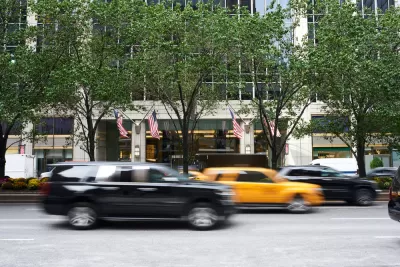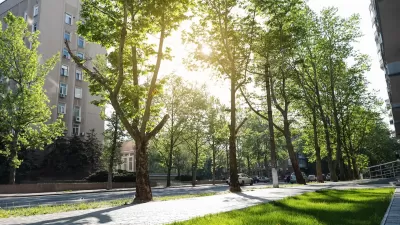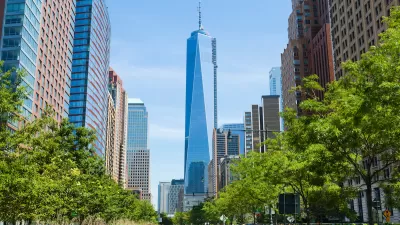The online tool now shows granular, tree-level data that highlights the public health benefits and economic contributions of urban trees.

New York City’s tree map just received a makeover, adding fine-grained data that can help New Yorkers understand the specific environmental, social, and economic impacts of street trees from the individual tree to the neighborhood scale.
As Linda Poon explains in Bloomberg CityLab, “The New York City Tree Map, launched Thursday, is an expansion of the city’s existing street tree map, which since 2016 has enabled New Yorkers to get up close and personal with the 650,000-some trees that line their neighborhood sidewalks.” The tool “pulls up stats on its ecological and financial contribution to the city, as calculated using formulas from the US Forest Service. Zoom out, and the map calculates all the benefits at a neighborhood level.”
“By drumming up public appreciation for the city’s greenery, the city hopes to encourage more people to help care for trees in their parks and neighborhoods. Volunteers can log any care they provide to a tree, whether that’s watering it, removing garbage from the tree bed, or pruning branches (which requires citizens to first obtain a permit).”
Additionally, “New Yorkers can also alert officials to any specific tree in need of attention by digitally tagging it on the map on their phone and putting in a service request or reporting an issue.”
FULL STORY: New York City’s Popular Online Tree Map Gets a Big Update

Manufactured Crisis: Losing the Nation’s Largest Source of Unsubsidized Affordable Housing
Manufactured housing communities have long been an affordable housing option for millions of people living in the U.S., but that affordability is disappearing rapidly. How did we get here?

Americans May Be Stuck — But Why?
Americans are moving a lot less than they once did, and that is a problem. While Yoni Applebaum, in his highly-publicized article Stuck, gets the reasons badly wrong, it's still important to ask: why are we moving so much less than before?

Research Shows More Roads = More Driving
A national study shows, once again, that increasing road supply induces additional vehicle travel, particularly over the long run.

Which US Rail Agencies Are Buying Zero-Emissions Trains?
U.S. rail agencies are slowly making the shift to zero-emissions trains, which can travel longer distances without refueling and reduce air pollution.

San Diego School District Approves Affordable Housing Plan
The district plans to build workforce housing for 10 percent of its employees in the next decade and explore other ways to contribute to housing development.

Lawsuit Aims to Stop NYC’s ‘City of Yes’ Zoning Reforms
A lawsuit brought by local lawmakers and community groups claims the plan failed to conduct a comprehensive environmental review.
Urban Design for Planners 1: Software Tools
This six-course series explores essential urban design concepts using open source software and equips planners with the tools they need to participate fully in the urban design process.
Planning for Universal Design
Learn the tools for implementing Universal Design in planning regulations.
City of Moreno Valley
Institute for Housing and Urban Development Studies (IHS)
City of Grandview
Harvard GSD Executive Education
NYU Wagner Graduate School of Public Service
City of Cambridge, Maryland
Newport County Development Council: Connect Greater Newport





























